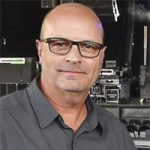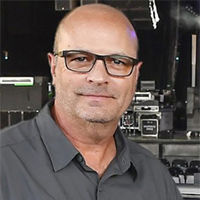With the summer touring season almost upon us once again, there’s no time like the present to review the contents of our front of house first aid kit. I’m sure it contains some high SPF sunscreen for those open-air shows and walks on the amphitheater lawn, mosquito repellent to ward off uninvited pests (and posers) at the mix area, and plenty of water and Gatorade in the FOH cooler to stay hydrated.
However, does it also include an EAP (emergency action plan) in place for changing weather conditions that can adversely affect the sound of the mix?
No matter what type of venue you’re working, there are many factors that can affect the sound of the mix relative to where we’re listening. Since we’re generally planted firmly at the FOH area during the show with little chance to wander, let’s focus on that location and look at a few variables that can wildly affect how things sound at show time compared to when we last heard the band at sound check.
Arena/Theater
Weather is not usually an issue with indoor shows because the chances of being slammed by thunderstorms with sideways rain and wind are nil. However, temperature and humidity changes throughout the day often occur, especially during a winter arena tour with the ice down on the arena floor (yay hockey!) and the loading dock doors open most of the morning in comparison to show time when a nice warm audience settles into their seats.
Another highly significant variable audio “adjuster” is an empty concrete arena floor at sound check versus lots of bodies and seats at show time.
Shed-Amphitheater/Open Air
Whether mixing a large tour in sheds and amphitheaters or local events in a band shell or the open air, we can all relate to the sudden swings in conditions that mother nature can and often does provide. We can take steps to prepare and protect the equipment from rain and direct sunlight, but how can we protect our mixes from going sideways when that storm front pushes through?
Start by taking the advice of Alexander Graham Bell: “Before anything else, preparation is the key to success.” In that spirit, let’s break down approaches to weather, element by element.
Wind. Ever tried to lock in the overall frequency response (especially the high-end portion) of the PA when the wind is whipping and shifting? It’s maddening and usually futile. What we can do, however, is stay in the moment and accept that there’s not much that can be done.
It helps to settle on a “nominal” PA tuning and ride it out, meaning what does the PA sound like when the wind dies for a moment or two? Does it sound about right? Then don’t fight it. Realize that when the wind gusts the high end will swell for a moment and then fall away, and our job is simply to hold onto the ship’s wheel and lower the main sail.
Temperature/humidity. The same challenges are thrown our way with temperature swings. Tuning a system in Denver in the middle of the summer is quite an experience. During the day it can climb to 90-plus degrees with little or no humidity and by show time it can drop down to the 50s while the humidity can climb a lot. All of this alters the performance and frequency response of the system and will even affect the arrival times of various zones of PA at FOH and in the seating areas.
Once again, the trick is preparation. I like to have shortcuts set up to get to the system processor quickly so I can move the delay time up or down on the subwoofers by a couple of milliseconds. The delay time I settled on at noon (90 degrees and 15 percent humidity) can slide quite a bit at show time, so shifting the time a couple milliseconds up (have a listen), and then a couple milliseconds down (have another listen) can help tighten up the low end.
Also, I’ve often noticed a large increase in upper bass and low-mid in the system as the temperature drops and the humidity rises. When the band starts the first song at twilight, the PA can often sound “tubby” and even “droney” compared to sound check time, so I prepare by having a fairly wide (one octave plus) EQ filter standing by around 200 Hz. It can be parked at 0 dB of boost/cut but having it ready to duck down 3 to 6 dB can bring immediate results.
This effect can be doubly emphasized if the subs are stacked on the ground and there are a lot of concert attendees between them and the FOH position. All those water bags (humans) between the two locations can create some pretty crazy low frequency anomalies that aren’t always pleasant. Be prepared to turn the subs down a dB or two to minimize the madness.
The same can be said for the highs. I usually have a high shelf in the main system EQ set up and standing by in the “on deck circle.” I may set the shelf frequency as low as 3.15 kHz with a gentle upward slope that I can quickly grab and add or subtract from the main left and right if the conditions have changed significantly. It’s like having an output knob for all the highs in the mains like we used in the old days of crossovers!
Rain with wind. Many outdoor concert venues have some form of roof structure above the FOH position to keep the sun from cooking the gear throughout the day, and even plastic walls that can roll down if the rain starts coming in sideways during a storm. This is very helpful for keeping the expensive gear dry but doesn’t always make it easy to maintain our audio reference.
I recall mixing a show a couple years ago where a beautiful night quickly turned rainy and nasty. The plastic walls of the FOH tent were installed on the sides – and front! – making it very hard to hear the PA. I quickly reached into the first aid kit and grabbed the nearfield monitors (which I never leave home without these days – thanks Kristy Jo!), inserted a quick delay time on the solo bus feeding them, and was able to add some clarity to what I was hearing in the plastic bubble.
Another emergency situation that can send the entire team into panic mode is a pop-up rain shower when FOH is not covered with a roof or said roof has been rolled back because we all saw twinkling stars 10 minutes ago. Keeping the gear dry can be solved with a large sheet of plastic, a knife and some quick action.
But how do you mix with plastic covering the console (and you)? I once cut a hole in the plastic just large enough to stick my head (and ears) through and continued mixing the show, looking very fashionable in my audio raincoat. It really can be a lifesaver and get you through a few minutes of unexpected rain.
Audio Paramedic
Let’s all rejoice – summer is almost here! Pack the raincoat and sun hat, some bandages, sunscreen and bug spray, but don’t forget to check that the FOH first aid kit is all stocked and ready as well. That beautiful, pristine sound check that happened several hours ago can become a distant memory when the elements take over, so be prepared to give your system a little CPR or a defibrillator if necessary. Being prepared to be an audio paramedic can bring a wounded system back to life.















